The Château de Chenonceau is often called the "Château des Dames" (The Ladies' Castle) due to the powerful women who designed, influenced, and preserved it throughout history.
The current château was built between 1515 and 1522 on the foundations of an old mill. The construction was commissioned by Thomas Bohier, a royal tax collector, and largely overseen by his wife, Katherine Briçonnet, while Bohier was away on the king's business.
The structure is a masterpiece of the early French Renaissance, known for its unique placement astride the River Cher.

Château de Chenonceau
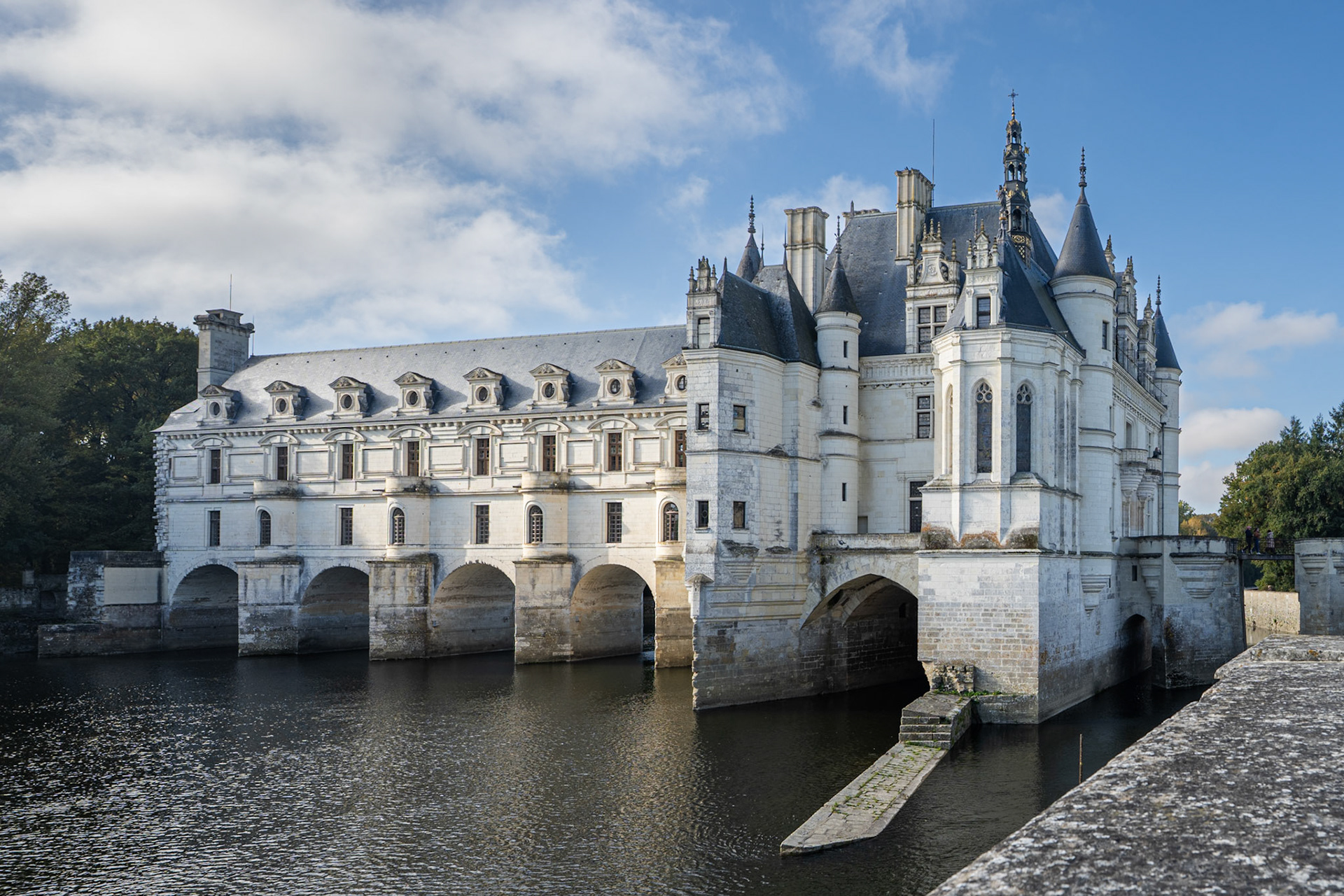
Château de Chenonceau
Tour des Marques
The oldest surviving part of the château is the Tour des Marques. This keep is a vestige of the original fortified residence built from 1432 by Jean II Marques and was deliberately preserved and incorporated into the new Renaissance structure in the early 16th century.

Tour des Marques
The château’s subsequent architectural evolution was dominated by the rivalry between two royal women: Diane de Poitiers and Catherine de Médicis. In 1547, King Henry II gifted the estate to his mistress, Diane de Poitiers. She commissioned the architect Philibert de l'Orme to build the distinct arched bridge spanning the River Cher, allowing for the creation of new gardens on the opposite bank. Following the King’s death, the Queen and Regent, Catherine de Médicis, forced Diane to exchange Chenonceau for the Château de Chaumont. Catherine then made Chenonceau her favorite residence, commissioning the architect Jean Bullant to build the iconic Grand Gallery. Inaugurated in 1577, this two-story structure was constructed atop Diane de Poitiers' bridge, extending the château across the entire river.
Ground Floor
The chapel of Château de Chenonceau was preserved during the French Revolution thanks to Madame Dupin, the owner of the time, who concealed its religious function by using it as a wood store. The original stained glass windows were destroyed during a 1944 bombing and replaced in 1954 by new creations from master glassmaker Max Ingrand.
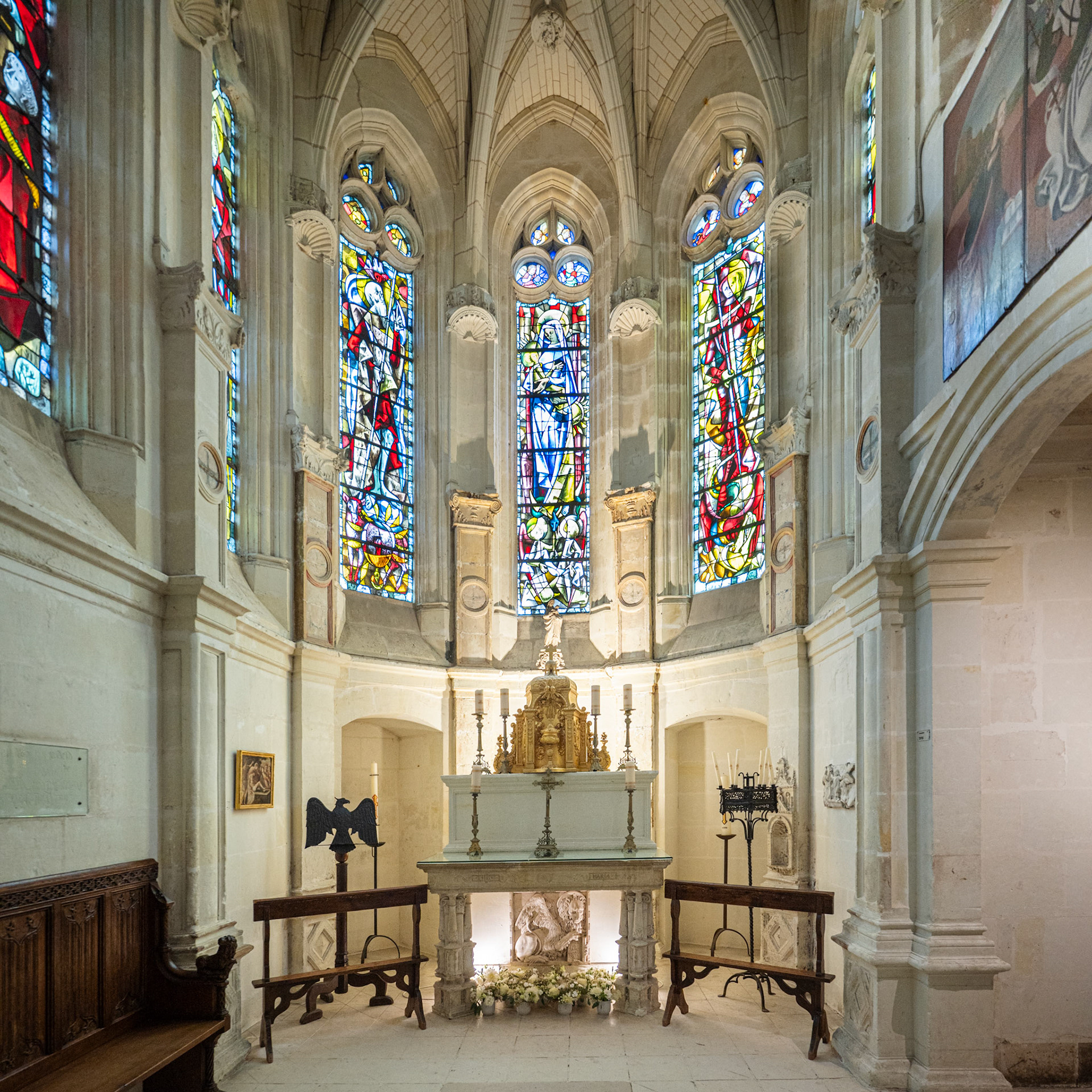
chapel
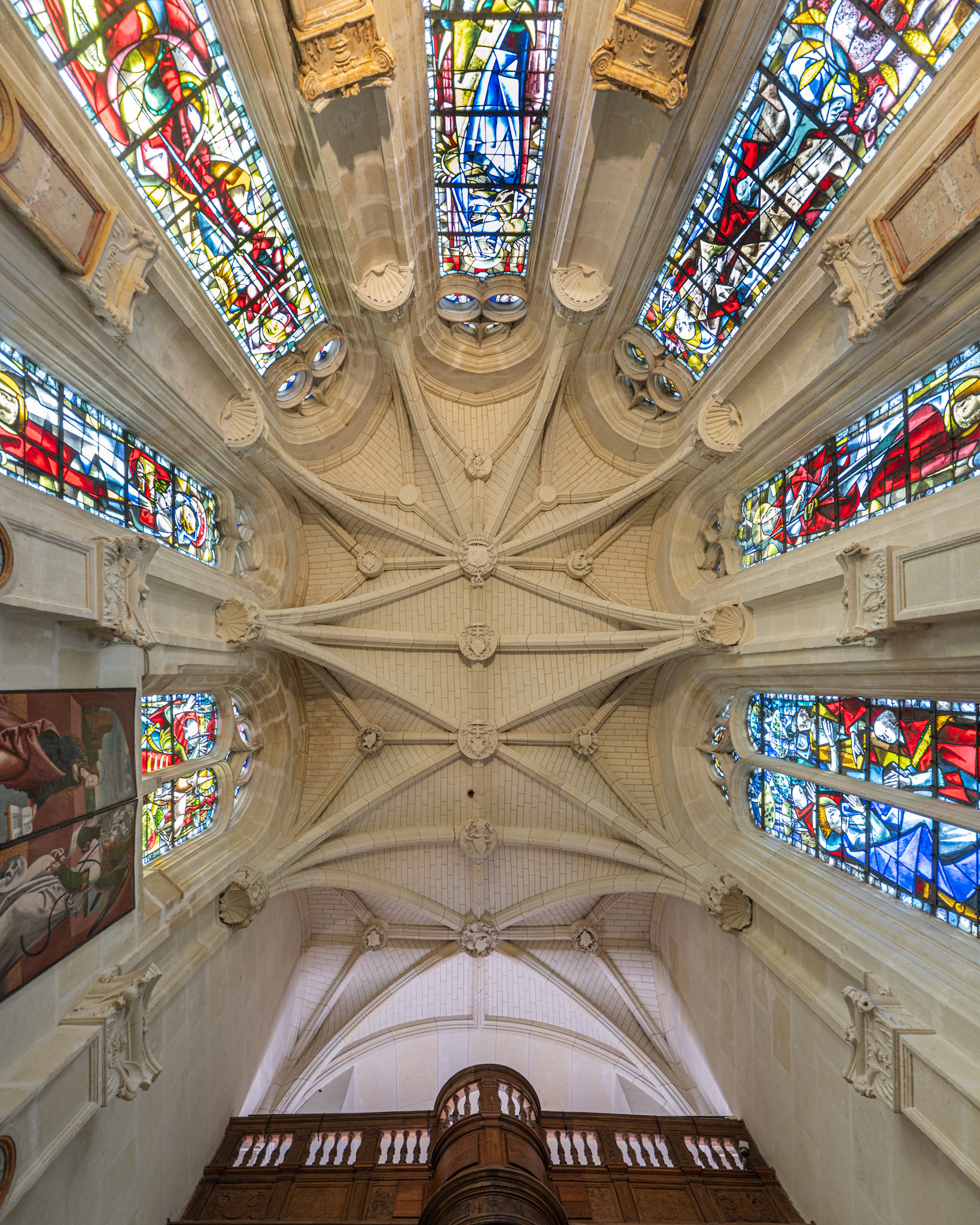
chapel and stained glass windows
The Diane de Poitiers Chamber is dominated by a monumental stone fireplace, the work of sculptor Jean Goujon. Above the fireplace, a portrait of Catherine de Médicis, painted by Henri Sauvage in 1901, is prominently displayed. The Queen is depicted in an austere black gown and coif, the perpetual mourning attire she adopted after the death of her husband, Henri II. The library offers a beautiful view over the Cher, the island, and Diane’s parterre. Its 1525 coffered ceiling, made of chestnut wood and designed in the Italian style with small pendant keys, is one of the earliest known examples of a coffered ceiling in France.
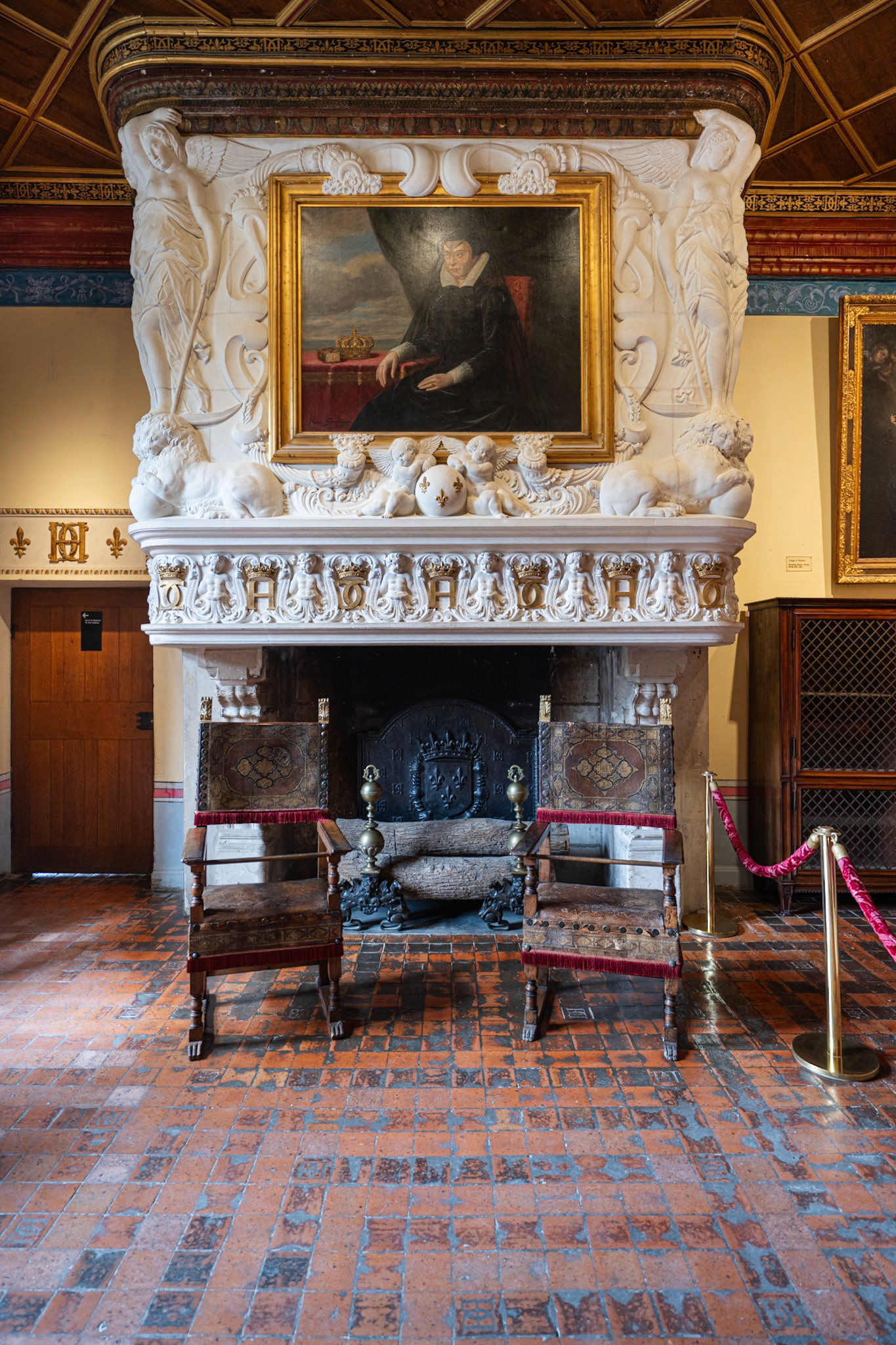
Diane de Poitiers Chamber
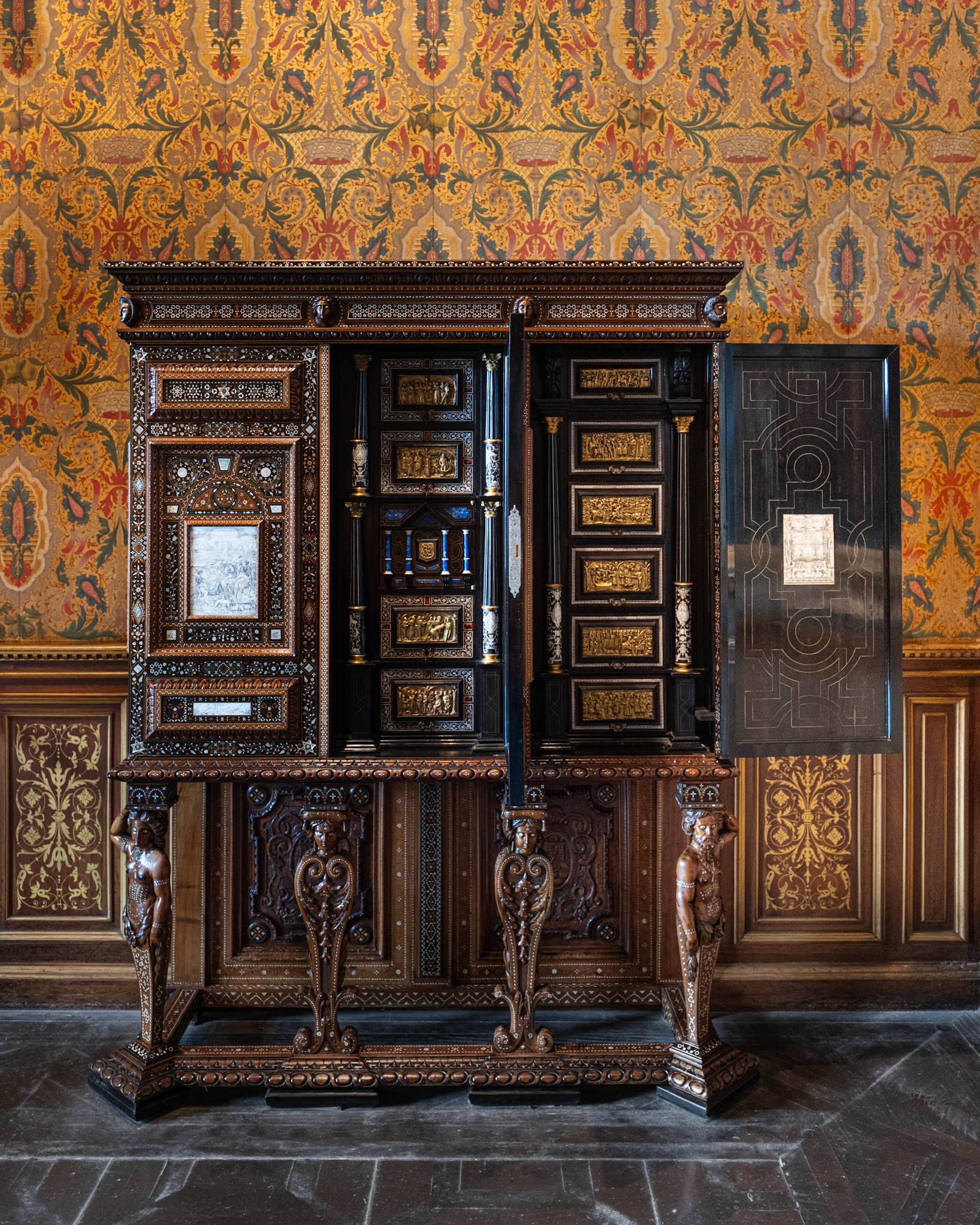

library with coffered ceiling
The Grand Gallery stretches for more than sixty metres across the River Cher, forming one of the château’s most distinctive architectural features. Its long, vaulted corridor is illuminated by a series of evenly spaced windows on both sides, offering views over the river and the surrounding landscape. During the First World War, the gallery was converted into a military hospital ward, its length and natural light ideally suited to accommodate rows of beds.

Grand Gallery
The François Ier Salon features an exceptional ensemble of furnishings, including three French 15th-century credenzas and a rare 16th-century Italian cabinet inlaid with mother-of-pearl and engraved ivory, presented as a wedding gift to François II and Mary Stuart. The room also contains one of the château’s finest Renaissance fireplaces; its mantel bears the motto of Thomas Bohier, "S’il vient à point, me souviendra," echoed by his coat of arms above the door, framed by two carved sirens. On the walls hangs Diane de Poitiers en Diane chasseresse by Le Primatice, painted at Chenonceau in 1556 and framed with the arms of Diane de Poitiers, Duchess of Étampes. Nearby, Les Trois Grâces by Van Loo portrays the three Nesle sisters—Mesdames de Châteauroux, de Vintimille, and de Mailly, successive favourites of Louis XV.

François Ier Salon - fireplace

François Ier Salon with Les Trois Grâces by Van Loo
The Louis XIV Salon blends its Renaissance architectural features with the rich furnishings of the 17ᵗʰ century. The fireplace retains the carved emblems of François I and Queen Claude, while the room is decorated with Aubusson-covered furniture and a console attributed to Boulle. Its focal point is the portrait of Louis XIV by Rigaud, presented to the Duke of Vendôme after the king’s visit to Chenonceau in 1650, shown in an exceptional four-piece carved wooden frame by Lepautre.

Louis XIV Salon
1st Floor
Catherine de Medici’s bedroom is distinguished by its painted and gilded coffered wooden ceiling, where numerous initials appear in the compartments, including the Medici coat of arms and the intertwined “C” and “H” of Catherine and Henri II at the center. The room is furnished with richly sculpted 16th-century pieces and a rare ensemble of Flemish tapestries from the same period. At its center stands a Renaissance canopy bed decorated with friezes, pilasters, and profile portraits inspired by antique medals. To the right of the bed, a panel painting by Correggio depicts The Education of Love, of which another version on canvas is held by the National Gallery in London.

Catherine de Medici’s bedroom
The Cabinet d’Estampes consists of two small adjoining rooms that illustrate different phases of Chenonceau’s interior decoration. The first features an elegant 18th-century painted canvas ceiling. The second room, opening onto the Cher, preserves a Renaissance ceiling and fireplace. Together, these spaces house a varied collection of drawings, engravings, and prints depicting the château across its many historical periods.

Cabinet d’Estampes

painted canvas ceiling
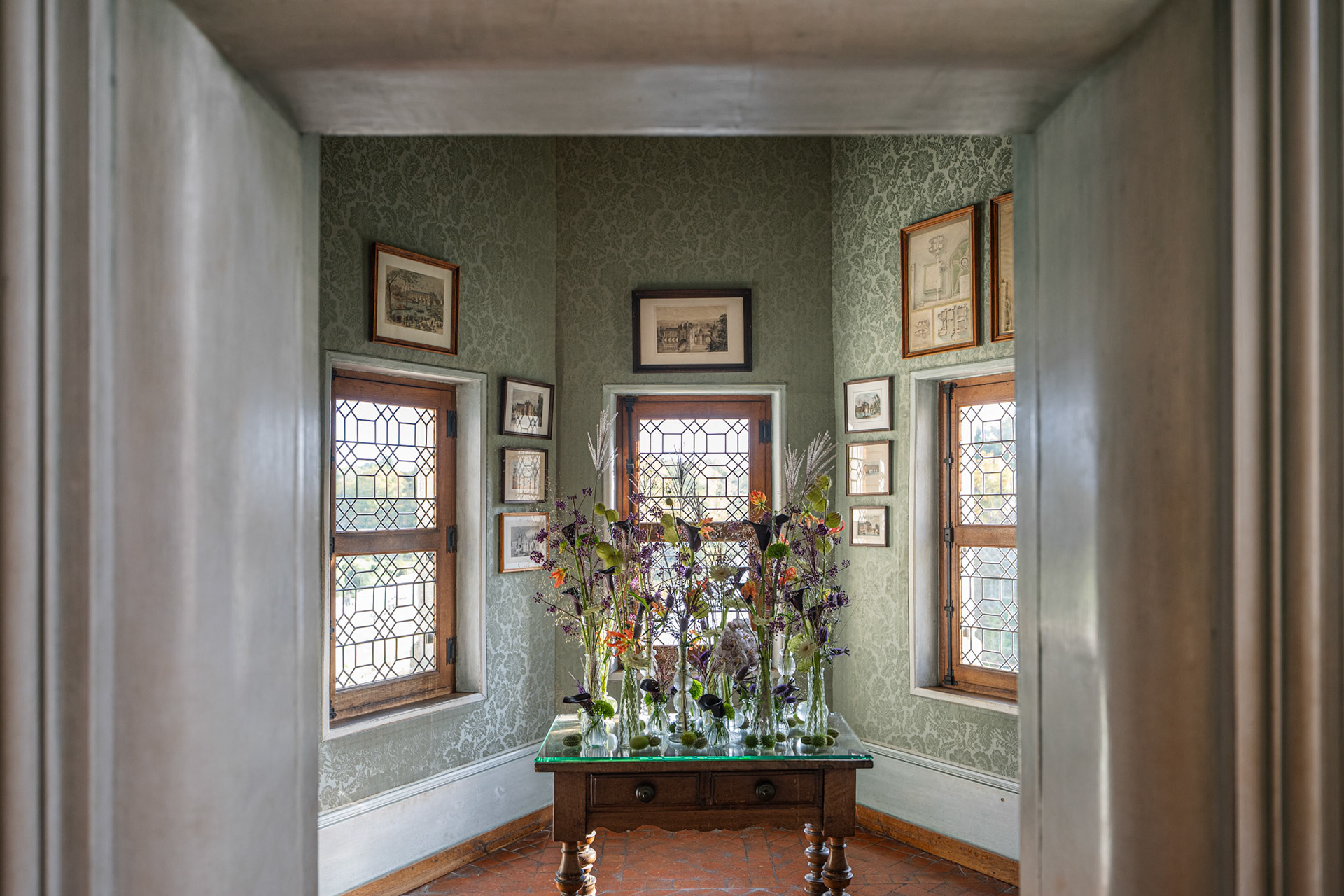
Cabinet d’Estampes
Gabrielle d’Estrées’ bedroom recalls the memory of the great love of Henri IV, mother of his legitimised son César de Vendôme. The room preserves its Renaissance character through its exposed-beam ceiling, flooring, fireplace, and carved furniture. Beside the canopy bed hangs a 16th-century Flemish tapestry titled Scenes of Château Life: Love. The three other walls are lined with a rare set of 17th-century Brussels tapestries from the series known as Les Mois Lucas, representing June (Cancer, Sheep Shearing), July (Leo, Falcon Hunting), and August (Virgo, Pay of the Harvesters).
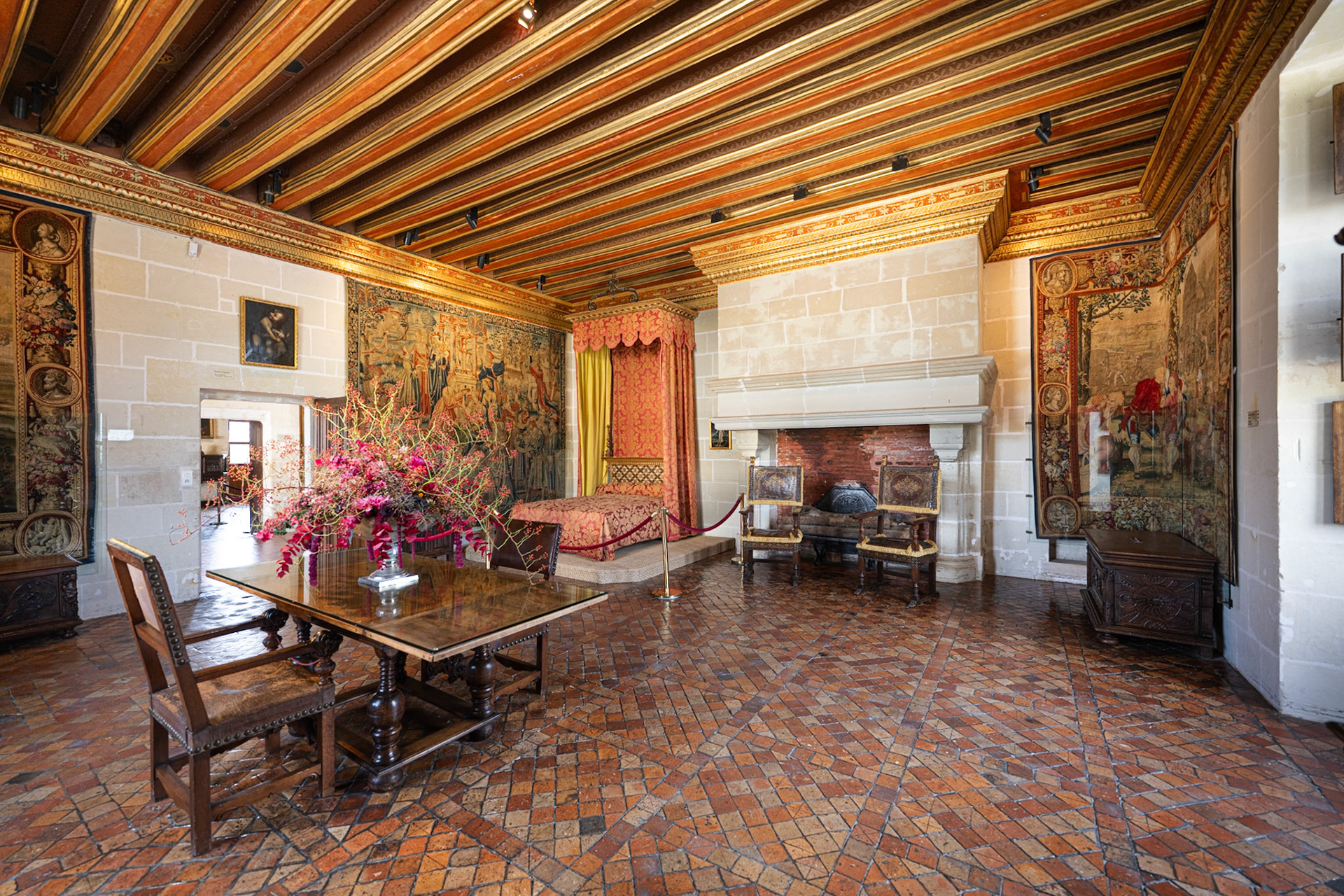
Gabrielle d’Estrées’ bedroom
2nd Floor
The Bourbon Vendôme Vestibule on the second floor preserves the 19th-century restorations carried out for Madame Pelouze by the architect Roguet, a disciple of Viollet-le-Duc. The hall contains two works by Pierre-Justin Ouvrié, a friend of Eugène Delacroix, both depicting the Château de Chenonceau. Several original Renaissance elements remain in place, including the two credenzas, the two tables, and the patterned stone floor.
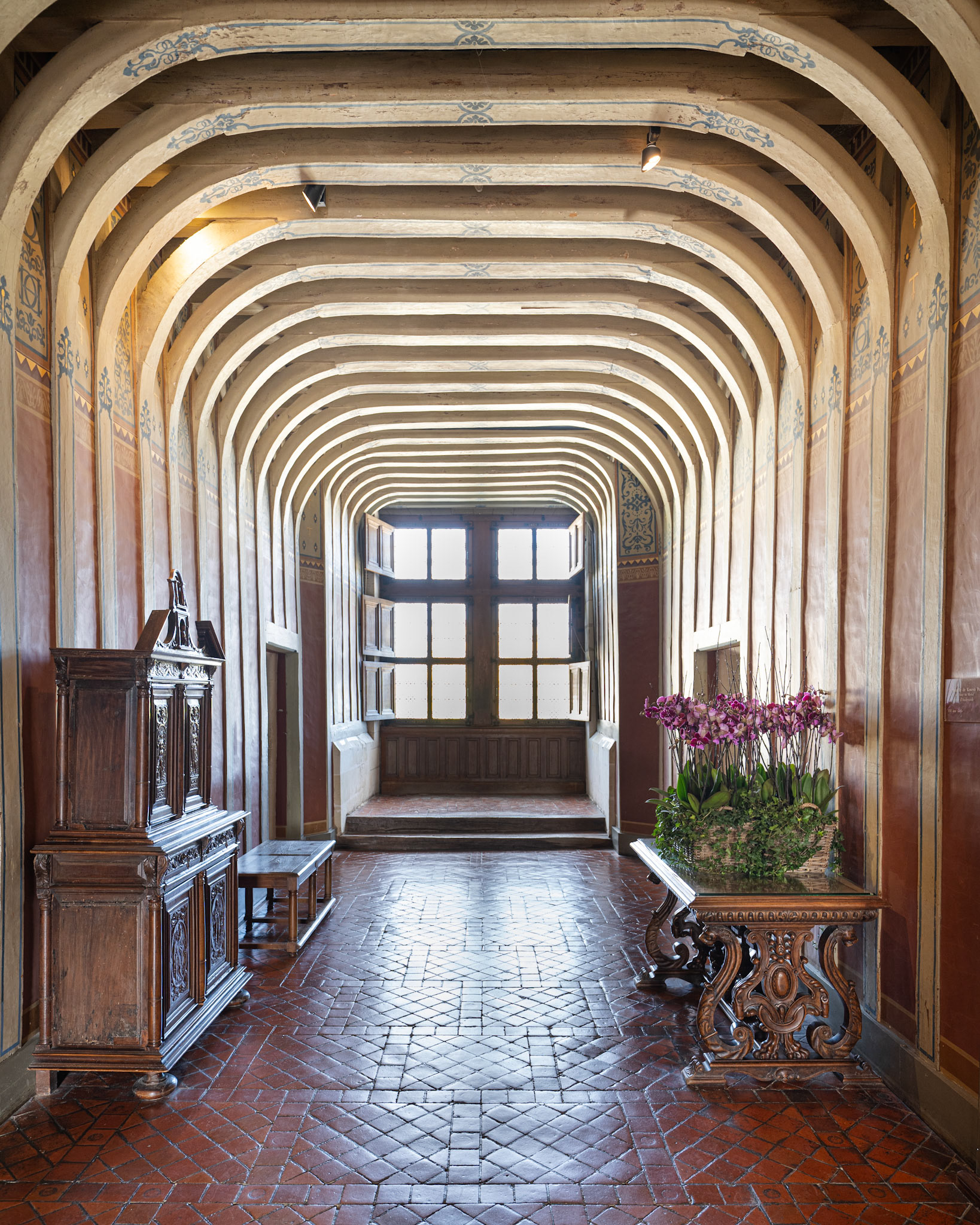
Bourbon Vendôme Vestibule

painting by Pierre-Justin Ouvrié
You may also like